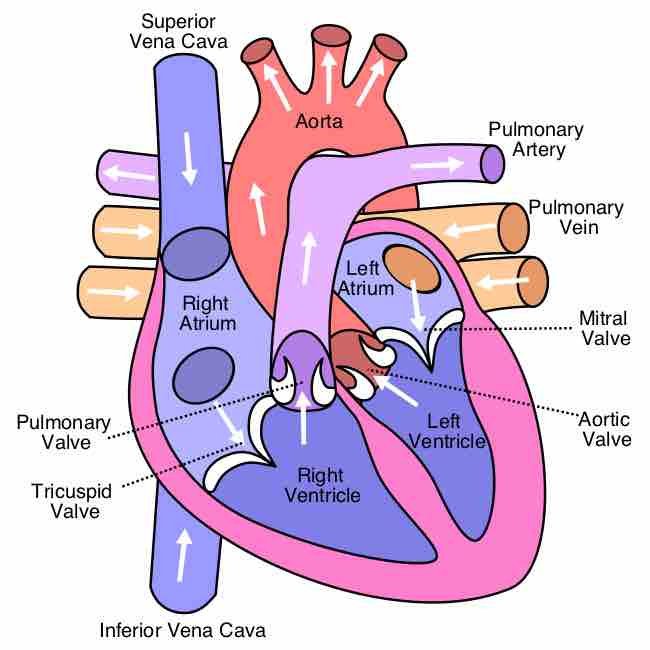The heart is a key organ in the circulatory system responsible for the generation of pressure and thus flow throughout the system and pulmonary circulatory systems.
The heart contains four chambers, two atria and two ventricles. The blood that is returned to the right atrium is deoxygenated and s passed into the right ventricle to be pumped through the pulmonary artery to the lungs for reoxygenation and removal of carbon dioxide. The left atrium receives newly oxygenated blood from the lungs through the pulmonary veins, which is passed into the strong left ventricle to be pumped through the aorta to the different organs of the body.

The Heart
Circulation of blood through the chambers of the heart. Deoxygenated blood is received from the systemic circulation into the right atrium, it is pumped into the right ventricle and then through the pulmonary artery into the lungs. Through association with the alveoli the blood is oxygenated in the lungs and returns to the left atrium through the pulmonary veins, before passing into the left ventricle and being pumped around the body.
Coronary Blood Supply
The heart has its own circulation system, coronary circulation, which is part of systemic circulation. The coronary arteries derive from the aorta and run along the surface of the heart and within the muscle to deliver oxygen-rich blood to the myocardium. The coronary veins remove deoxygenated blood from the heart muscle, returning it through the coronary sinus into the right atrium.
When healthy, the coronary arteries are capable of autoregulation to maintain blood flow at levels appropriate to the needs of the heart muscle. Blockage of these vessels can lead to poor oxygenation of the heart muscle, impairing its function and in severe cases leading to tissue death, resulting in a myocardial infarction or heart attack.

Coronary Circulation
The coronary circulation supplies the heart muscle with the oxygen and nutrients it requires to function.